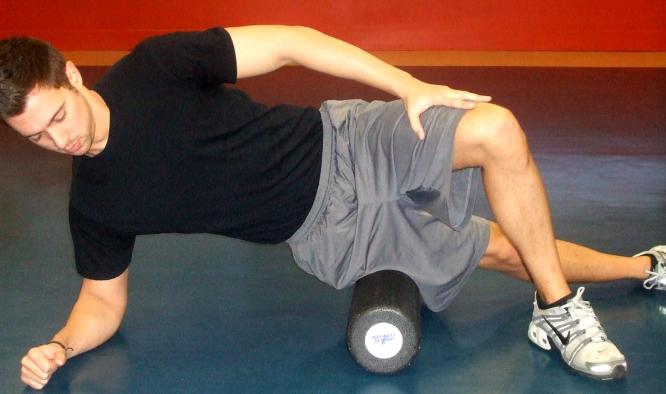What is a Charley Horse? How do I Stop these Muscle Cramps?!

A charley horse, or muscle cramp, is a common condition that results in your muscles becoming tight, stiff and extremely painful.
These muscle cramps are referred to as “charley horses” because of Charley “Old Hoss” Radbourne, an 1880s-era baseball pitcher who often suffered from muscle cramps during games.
What Causes a Charley Horse?
About 1 in every 3 adults is affected by muscle cramps in their lower limbs. I get asked very frequently from my patients about these pains. In many cases, the pain is temporary and goes away on its own, but for some the cramps interfere with sleep, quality of life and daily activities. Anyone can get a charley horse, but they’re most common in the following populations and scenarios:
- During exercise
- At nighttime, especially in the elderly
- In pregnant women
- In people with neurological disease
- During kidney dialysis
Many medications are also associated with muscle cramps, including statin cholesterol-lowering drugs, blood pressure drugs, certain asthma drugs, diuretics and more. In addition, the following factors may also increase your risk of a muscle cramp:
- Poor blood circulation in your legs
- Muscle fatigue
- Dehydration
- Mineral deficiencies, including magnesium, potassium or calcium
Is Magnesium Deficiency Causing Your Charley Horses?
Up to 80 percent of Americans are not getting enough magnesium and may be deficient. Magnesium is often thought of primarily as a mineral for your heart and bones, but this is misleading. Researchers have now detected 3,751 magnesium-binding sites on human proteins, indicating that its role in human health and disease may have been vastly underestimated.
If you suffer from headaches or charley horses, low levels of magnesium could be to blame. Magnesium is necessary for activating muscles and nerves, and a key sign of ongoing magnesium deficiency can be headaches, muscle contractions and cramps like charley horses.
Low Potassium Levels May Also Trigger a Charley Horse
Potassium, a mineral and electrolyte, is essential for your cells, tissues and organs to function properly. It plays a vital role in heart health, digestive and muscular function, bone health and more. One of the symptoms of low potassium levels is muscle cramps.
While potassium is found in many foods commonly consumed in the U.S. such as fruits, vegetables, dairy products, salmon, sardines and nuts.
Potassium is a nutrient that needs to be kept in proper balance with sodium in your blood. If you consume too much sodium, which is common if you eat a lot of processed foods, you’ll have an increased need for potassium.
Others who are at particular risk of low potassium, or hypokalemia, are those with chronic malabsorption syndromes, such as Crohn’s disease, or those taking heart medicine. However, anyone who eats a poor diet with an excess of processed foods and not enough fresh, whole foods is potentially at risk of inadequate potassium levels and related muscle cramps.
Green vegetable juicing is an excellent way to ensure you’re getting enough nutrients for optimal health. Some additional rich sources of potassium are: Lima beans, winter squash, cooked spinach, and avocados.
Too Little Calcium May Trigger Muscle Cramps
Low blood levels of calcium may increase the excitability of nerve endings and the muscles they stimulate. Good sources of calcium include nuts, seeds and raw, organic, grass-fed dairy, and vegetables. Homemade bone broth is another excellent source. Simply simmer leftover bones over low heat for an entire day to extract the calcium from the bones. You can use this broth for soups and stews or drink it straight.
What to Do If You Get a Charley Horse
A charley horse often occurs without notice, sometimes waking you up from sound sleep. If you’re lying down when the pain starts, stand up and put some weight on your foot. (Easier said than done) Walking around will help to increase blood circulation to your muscles and possibly help to soothe and relax the cramp.
You can also try a simple stretch. If the cramp is in your calf in the back of your lower leg, pull your toes and foot upward until you feel a stretch in the back of your leg. You can also do this sitting down with your legs outstretched. Put a towel around your feet and gently pull both ends toward you until you feel a stretch.
Soaking in an Epsom salt bath may also help to relieve pain and possibly help with prevention. Massaging the area and applying a heat pack will increase blood flow to the area promoting healing and soothing pain.
Staying well-hydrated is also important for muscle cramp prevention. You’ll want to drink enough pure filtered water so that your urine is pale yellow in color. In addition, performing regular stretching exercises on your legs may help reduce your risk of a charley horse.
Chiropractic care will ensure that your skeletal system is in proper alignment and that your nervous system is functioning well. Regular adjustments will balance any bio-mechanical malfunctions that cause undue tension in specific areas of the body. Schedule your Adjustment online now at this link or call 913-283-9803.


 We once thought that the human genome served as a recipe for the body and that when you end up with “bad genes” there is simply nothing that can be done. Sometimes “bad things” happen to “good people” and that was long thought to be the end of story. The fact of the matter is that what you are born with is only the beginning of the story, and every day, through the choices you make in the area of diet, exercise, meditation, and
We once thought that the human genome served as a recipe for the body and that when you end up with “bad genes” there is simply nothing that can be done. Sometimes “bad things” happen to “good people” and that was long thought to be the end of story. The fact of the matter is that what you are born with is only the beginning of the story, and every day, through the choices you make in the area of diet, exercise, meditation, and  Ayurveda Mind Body Dosha Type Test
Ayurveda Mind Body Dosha Type Test




 Protein is
Protein is  What is the point of foam rolling?
What is the point of foam rolling?








 Sitting is the new smoking. It is killing us by the masses and we don’t know any better. Our human bodies are not meant to be folded in half for hours at a time. Sedentary lifestyle instigates every co-morbidity known to man. The muscles decondition and atrophy. The organs are squished, restricted in function and get backed up with viscous fluids. The joints degenerate and the nerves get irritated and inflamed. The brain slows with fog. The cardiovascular and lymphatic systems grow stagnant. All that is just the beginning! Compile years of desk time studying, reading, computer work, phone calls, meals, entertainment, and traveling then you have created a human body that is really good at one thing- sitting. We will adapt to the stresses and demands that are asked of us. If the challenge is only that of endurance in the seated posture, then we will lose our mobility. Use it or lose it!
Sitting is the new smoking. It is killing us by the masses and we don’t know any better. Our human bodies are not meant to be folded in half for hours at a time. Sedentary lifestyle instigates every co-morbidity known to man. The muscles decondition and atrophy. The organs are squished, restricted in function and get backed up with viscous fluids. The joints degenerate and the nerves get irritated and inflamed. The brain slows with fog. The cardiovascular and lymphatic systems grow stagnant. All that is just the beginning! Compile years of desk time studying, reading, computer work, phone calls, meals, entertainment, and traveling then you have created a human body that is really good at one thing- sitting. We will adapt to the stresses and demands that are asked of us. If the challenge is only that of endurance in the seated posture, then we will lose our mobility. Use it or lose it!